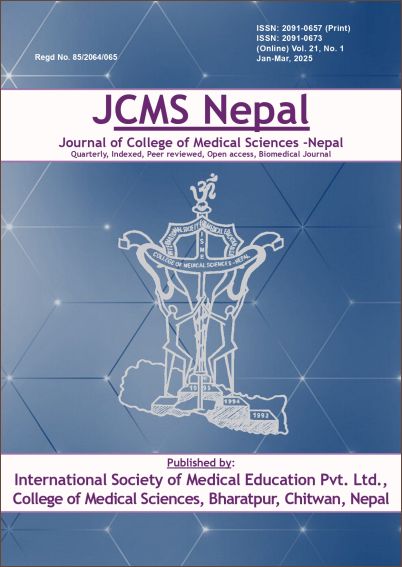Clinical and Biochemical Characteristics of Children with Hepatitis A Infection
DOI:
https://doi.org/10.3126/jcmsn.v21i1.70811Keywords:
hepatic encephalopathy, hepatitis A, jaundice, viruses, vomitingAbstract
Background
Hepatitis A is the most common cause of infectious hepatitis among children in India. It consists of 3 phases- Prodromal phase, Icteric phase, and Recovery phase. Hepatitis A virus (HAV) infection is widespread accounting for high incidence in our community. The current study intends to assess different clinical and biochemical parameters of HAV infection in our community.
Methods
A single-centered cross-sectional study was conducted among 50 patients attending the outpatient department and in-patient department at ASCOMS and Hospital Jammu, with symptoms suggestive of Acute Viral Hepatitis, was done from April 2024 to August 2024.
Results
HAV infection was more common in males (64%) and mostly among the age group of 12-15 years (28%). The most common symptom was fever (92%) and the biochemical parameter was raised serum bilirubin (94%). Ultrasonography findings were gall bladder edema, pericholecystic edema, minimal free fluid, and minimal right-sided pleural effusion, either of which were seen in only 46% of patients.
Conclusions
Hepatitis A is a major health problem due to bad hygiene and sanitary practices and lack of immunization. Clinically, the most common symptom of Hepatitis A infection was fever (92%). In terms of biochemical parameters, the most consistently raised bilirubin (>1mg/dl) is seen in 94% of the cases.
Downloads
Downloads
Published
How to Cite
Issue
Section
License
Copyright (c) 2025 The Author(s)

This work is licensed under a Creative Commons Attribution-NonCommercial-NoDerivatives 4.0 International License.
This license enables reusers to copy and distribute the material in any medium or format in unadapted form only, for noncommercial purposes only, and only so long as attribution is given to the creator.




